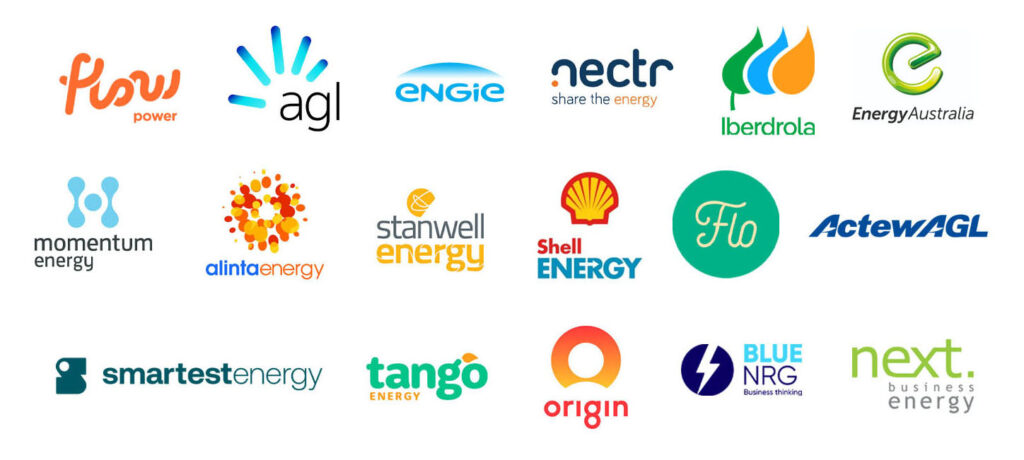The timeline for coal power stations’ exit in Australia keeps shifting forward, with the largest in the country – the 2.9 Gigawatt Eraring plant closing seven years earlier than scheduled in 2025.
AGL Energy has also announced that it is bringing forward the closure of its Victorian brown coal-fired Loy Yang A by 10 years to 2035.
Chinese-owned Chow Tai Fook Enterprises’ Loy Yang B is set to retire in 2047, which is its original operational life span. It has a capacity of 1,050 MW and was built in 1993.
In the wake of the abrupt closure of Victoria’s Hazelwood coal-fired plant back in 2017, which created an energy price crisis, Australia introduced a law stipulating that coal power plants must give three years’ notice.
The law was intended to prevent similar explosions in electricity prices. But as time marches on and more renewables continue to flood into the National Energy Market, coal’s days are numbered.
What many did not expect, however, is the speed at which this would happen.
Origin Energy’s CEO Frank Calabria said: “The economics of coal-fired power stations are being put under increasing, unsustainable pressure by cleaner and lower-cost generation, including solar, wind and batteries.”
Coal-fired power plants are expected to shut three times faster than anticipated
AEMO said that previous estimates showed that coal-fired power plants contribute 23 GW of electricity to the NEM with 5 GW to be withdrawn by 2030.
The Australian Energy Market Operator stated in its draft 2022 Integrated System Plan for the NEM that it expects the entire fleet to have exited the market completely by 2043.
The new report states that 14 GW is now expected to exit the NEM by 2030 under a Step Change Scenario. That is only eight years from now.
In the report, AEMO states that over the last 10 years, coal power stations have withdrawn from the market before announced closure dates.
It also states that the competitive and operational pressures will continue to intensify and accelerate the process due to the “ever-increasing penetration of cheap renewable energy and battery storage.”
The phasing out of coal also ties in with efforts to combat climate change and reach net zero emissions.
A coal power plant takes a long time to fire up, sometimes more than 24 hours. This means that to meet peak demand in the mornings and evenings, they need to be kept running continuously.
The glut of solar during daytime hours means they are running at a loss most of the day. The phenomenon is known as the duck curve.
Gas fast peaking plants and baseload coal generation kept the coal business model going, but the introduction of battery storage into the mix has sounded a death knell.
Put simply, coal is no longer profitable and it is only going to get worse.
The AEMO report quotes various generators said that closures have been brought forward at Yallourn Power Station ( four years, to 2028), Eraring Power Station (one unit by two years, to 2030, another by one year, to 2031), Mt Piper power station (by two years, to 2040).
One unit at Torrens Island B Power Station will be closed for three years from October 2021.
The report also states that the early closure of both the Loy Yang A and B power stations is increasingly likely.
Timeline for coal exit in New South Wales
| Name | Owner | Commission Date | Closure | Capacity MW | Emissions Tonnes per year | Coal Type |
| Bayswater | AGL | 1982 | 2033 | 2640MW | 13,725,965 tonnes CO2 | Black |
| Eraring | Origin | 1982 | 2025 | 2880MW | 14,914,916 | Black |
| Lidell | AGL | 1971 | 2023 | 2000MW | 7,840,239 | Black |
| Mt Piper | Energy Australia | 1993 | 2040 | 1400MW | 6,841,302 | Black |
| Vales Point | Sunset Power | 1978 | 2029 | 1320MW | 7,015,626 | Black |
Total (MW): 10,240
Timeline for coal exit in Victoria
| Name | Owner | Commission Date | Closure | Capacity MW | Emissions Tonnes per year | Coal Type |
| Loy Yang A | AGL | 1984 | 2035 | 2200MW | 20,107,115 tonnes CO2 | Brown |
| Loy Yang B | Chow Tai Fook | 1993 | 2047 | 1050MW | 10,132,776 | Brown |
| Yallourn | Energy Australia | 1975 | 2028 | 1480MW | 13,856,313 | Brown |
Total (MW): 4,730
Timeline for coal exit in Queensland
| Name | Owner | Commission Date | Closure | Capacity MW | Emissions Tonnes per year | Coal Type |
| Callide B | CS Energy | 1989 | 2028 | 700 | 5,103,540 | Black |
| Callide C | CS Energy | 2001 | N/A | 810 | 5,265,665 | Black |
| Gladstone | Consortium | 1976 | 2035 | 1680 | 8,547,021 | Black |
| Kogan Creek | CS Energy | 2007 | 2042 | 750 | 4,360,686 | Black |
| Millmerran | Intergen | 2002 | 2051 | 852 | 5,794,351 | Black |
| Stanwell | Stanwell Corporation | 1993 | 2046 | 1445 | 7,637,735 | Black |
| Tarong | Stanwell Corporation | 1984 | 2037 | 1400 | 10,473,950 with Tarong North | Black |
| Tarong North | Stanwell Corporation | 2002 | 2037 | 443 | Black |
Total (MW): 8,080
Timeline for coal exit in Western Australia
WA does not form part of the National Energy Market. It has three coal-fired generators. Collie, built in, 1999 is expected to close in 2040. Muja has three units that are expected to close in 2022, 2024 and 2040.
Bluewaters was built in 1999 and does not have an announced closure date.
Will the lights stay on if coal exits the market early?
AEMO is fully aware of the fact that as coal withdraws from the market and solar and wind energy begins to dominate the market, the NEM must become much more flexible.
Put simply, the system must be able to match the time and place of generation to where and when demand for energy presents itself.
AEMO says that to meet this new reality, the NEM will need to treble firming capacity that can respond to demand signals. This will require huge infrastructure investment to transport solar and wind energy to where it is needed.
Battery storage will also play a large role, alongside pumped hydro (which is also technically battery storage) as both are immediately dispatchable and can help balance out frequency changes on the grid when supply does not meet demand.
The NEM currently relies on 23 GW of firm capacity from coal, and 20 GW of dispatchable firming capacity from storage and gas generation.
Fast forward to 2050, and without coal, the NEM will require:
- • 45 GW / 620 GWh (gigawatt hours) of storage, in all its forms. The most crucial need is batteries, hydro or alternative storage of up to eight hours’ depth.
- By 2050 vehicle-to-grid (V2G services and other emerging technologies will provide approximately 30 GW of dispatchable storage capacity.
- Utility-scale battery and pumped hydro storage 15 GW.
- • 7 GW of existing dispatchable hydro, which relies on natural water flows rather than using energy to pump water and recharge reservoirs such as Snowy Hydro.
- • 9 GW of gas-fired generation for peak loads and firming. At current forecast gas prices, gas-fired generation will play a crucial role, complementing battery and pumped hydro generation to support periods of peak demand. Over time, its emissions will need to be offset, or natural gas will need to be replaced by net-zero carbon fuels such as green hydrogen or biogas.
- • Wholesale demand response and other flexible loads to also help manage peak loads and troughs, reducing reliance on more capital-intensive responses.
Do you want to learn more about the National Energy Market?
If you want to learn more about the National Energy Market and the latest developments in the electricity sector, you can sign up for our newsletter or visit our blog section.
Keep an eye out for the rest in the series of our “Exit of Coal” blog series.
We source, analyse, compare and rank commercial, industrial and multisite energy quotes. Obligation Free.
Chat with one of our experienced consultants today and get the insights your business needs to help manage the risks associated with volatile electricity and natural gas markets. Our energy procurement service is obligation-free and provides a time-saving way of securing lower energy rates from our panel of energy retailers.














